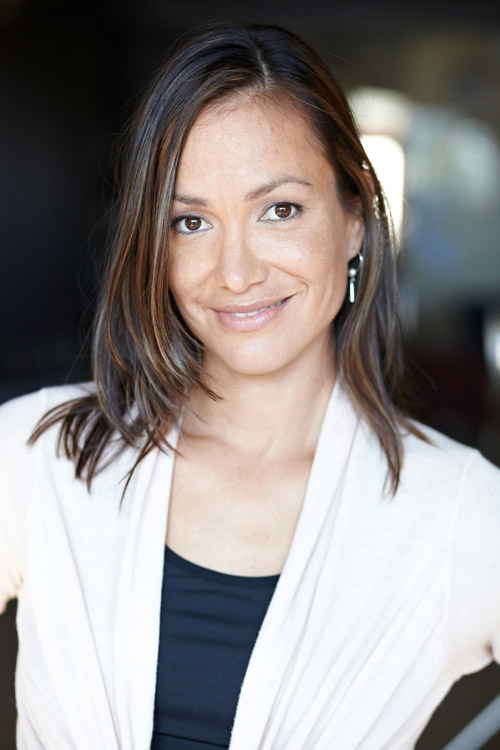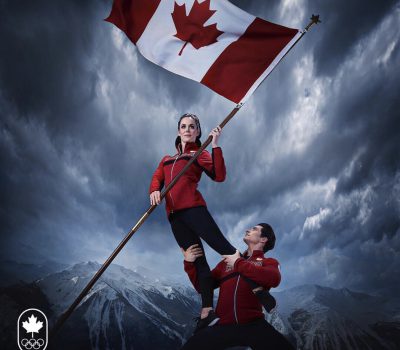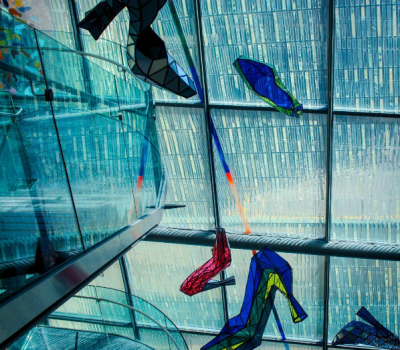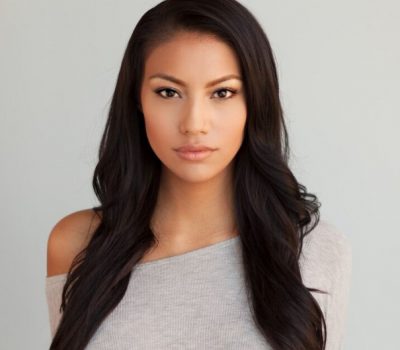Canadian Olympian Waneek Horn-Miller Talks Manitobah Mukluks And Her Biggest Inspirations
As an accomplished Canadian athlete and activist, Waneek Horn-Miller was a member of the Canadian Olympic Water Polo team and has also been an outspoken survivor of the Oka Crisis. These days, the inspirational leader in the Mohawk community devotes her time to the Manitobah Mukluks, an Aboriginal-owned, Winnipeg-based company that sells traditional moccasins and mukluks. The latest project for the Manitobah Mukluks is the Storyboot School, a semi-permanent placement at the Bata Shoe Museum in Toronto. At the Storyboot School, students learn how to make mukluks in an effort to ensure that this significant First Nations tradition is kept alive. Horn-Miller, who currently serves as the director of the Storyboot School, sat down with Real Style to discuss her partnership with the Manitobah Mukluks and more.
Real Style: What drew you to the Manitobah Mukluks?
Waneek: I’m a retired Olympic athlete and I do a lot of motivational speaking. I really like to tell out-of-the-box success stories to indigenous youth. I came across the Manitobah Mukluks really organically. I ran into someone wearing them at a ceremony and asked about them. I happened to be in Winnipeg a few weeks later, so I called up Manitobah Mukluks and asked “Can I learn more about your company? I would just like to tell its story to the youth.” I was picked up by the founder [Sean McCormick] in his pickup truck. He took me on a tour and told me all about Manitobah Mukluks. I just saw the passion in his eyes of what he was trying to do with his company as a business and as a real guiding light for the community.
Real Style: How did the Storyboot School come to be?
Waneek: [Sean McCormick] is very passionate about the traditional art form of moccasin and mukluk making. He wants to make sure that this art form is passed on. A lot of youth haven’t had that transition of knowledge, maybe because they may live in an urban setting or because their parents went to residential school. So he wanted to give them another way to learn and get access to that knowledge. I’ve been the Storyboot director for a couple years now and I have the best job in the world. I travel all over opening over up these schools and it’s a lot of fun.
Real Style: What is the significance of having the Storyboot School in the Bata Shoe Mueseum and Toronto?
Waneek: It’s so important. Toronto is the biggest city in the country. There’s a huge indigenous population in the city that is multigenerational now. They might not be getting that opportunity that their parents or grandparents did. The Bata Shoe Museum is a really amazing holder of so much knowledge of footwear so it’s a perfect relationship. In this building, they have some of the most beautiful historical mukluks and moccasins pieces. To have the Treadright foundation be so supportive of it, it’s a very unique relationship between the three organizations that we’re seeing here.
Real Style: How did your role as an Olympian prepare you for your role as the Storyboot Director?
Waneek: You know, it’s all about communication. I had to do a lot of teaching about my culture to my teammates and people I came in contact with at the 2000 Sydney Olympic Games because I was the only Indigenous Olympian from Canada and the US that year. I had to become good at explaining and getting people to understand, so it really prepared me to be a good communicator and to share my passion with people. I love who I am, I love where I come from, and so when I meet people, I want to infect them with that love and I want to them learn more.
Real Style: Can you describe the historical and cultural significance of mukluks?
Waneek: The word “mukluk” is actually an Inuit word from Alaska. It is essentially the traditional winter boot of the people of the North. They survived winters wearing this footwear. They had to be functional first and foremost but they didn’t stop there. They made them beautiful by beading them and embroidering them. For many, many generations, this has been the footwear that kept our ancestors alive.
Real Style: Why is it so important for young people today to take up this tradition?
Waneek: For so many reasons. It’s that connection to your ancestors. It’s also the connection to the message of that mukluk, which in itself speaks of resiliency, tenacity and power. It speaks of the strength that our ancestors had that allowed them to survive in a very harsh climate. It’s that same strength that lies in indigenous people today. It’s important because we’re not a culture that’s written down. We have a lot of symbolism in our culture. So the mukluk is very symbolic of that strength and tenacity. Knowing how to make them is really significant because gifts are very important in our culture. We give gifts when babies are born, when couples are married, so it’s a symbolic gift as well. Being able to make a pair is very symbolic in building self confidence young people. I think you’re able to be your own flavour of indigenous; it’s more who you are, what you know, and moccasin making is a part of that.
Real Style: Finally, can you talk a bit about some people in the indigenous community who inspire you?
Waneek: I always look close to home for inspiration. My two older sisters and my mum are very inspirational. One [sister], Dr Kahente Horn Miller, has a PhD and is a professor of indigenous studies at Carleton University. My other sister, O Horn, is a medical doctor. My little sister, Tiio Horn, is an award winning actress here in Toronto. I’m also inspired by women like Sydney Blackstock [Executive Director of the First Nations Child and Family Caring Society of Canada & professor at McGill University]. She’s doing so many things and is such a tenacious person. I’m inspired by young people like Ashley Callingbull, who uses her platform to raise awareness. Those are some women who I’m inspired by. I’m also really inspired by a guy named Caribou Legs right now. He’s running to raise awareness about missing indigenous women. He’s amazing. These kinds of stories, as well as the women and men in my life, are what I look to for inspiration.




